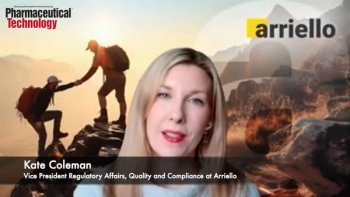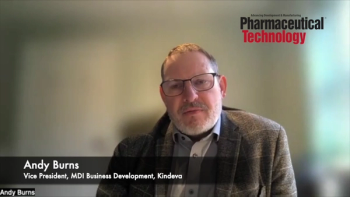
Quality Systems
Latest News

Latest Videos

More News

The approval makes Evrysdi the first and only tablet for treating spinal muscular atrophy.

The pledge signifies ArisGlobal’s commitment to upholding high standards and best practices for the responsible use of artificial intelligence.

Agnes Cwienczek, director of Product Management at ArisGlobal, talks with Pharmaceutical Technology® about how careers for women in STEM fields can be nurtured.

In this exclusive Drug Digest video interview Anil Kane from Thermo Fisher Scientific will be tackling the topic of advances in small-molecule manufacturing and several other experts will provide brief commentaries on associated topics.

With the approval, FDA granted SpringWorks a rare pediatric disease priority review voucher.

Acoramidis was approved by FDA in November 2024 and is prescribed in the US under the brand name Attruby.

Pharmaceutical Technology® sat down with Kate Coleman from Arriello to run through the major trends from 2024, including the importance of technological advances, and how these may progress in 2025.

The company is recalling one lot of Fentanyl Transdermal System 25 mcg/h transdermal patches because of possible multi-stacking of patches.

EMA introduced its New Fee Regulation in January 2025, but what impact will the new fees and charges have on medicine developers?

Bio/pharma companies have a lot to consider when tackling social media communications, especially within Europe.

AI regulations in healthcare are rapidly evolving, and one should consult with regulatory subject matter experts, says Siegfried Schmitt, PhD, vice president, Technical at Parexel.

Pharmaceutical Technology® spoke with Andy Burns, vice president, MDI Business Development at Kindeva, about how sustainability requirements are impacting contract development and manufacturing organizations, specifically for the development and manufacture of inhalation drugs.

The platform is live with full functionality for use by marketing authorization holders and national competent authorities to report drug supply information.

Pharmaceutical Technology® spoke with Saharsh Davuluri, Vice-Chairman and Managing Director, Neuland Laboratories, to see how the push to sustainability is impacting contract manufacturers.

One lot of Phenylephrine hydrochloride Injection, USP, 10 mg/mL is being recalled due to particulate matter found in a vial.

Dirk Margosch, Vice President Visual Inspection, Assembly & Secondary Packaging at Vetter Pharma-Fertigung GmbH & Co KG, provides advice on how to respond to defective vials in a batch and how to prevent future problems in secondary packaging.

Pharmaceutical Technology® spoke with Charles Ruban, president and CEO, Verdot, about the focus of moving to sustainability practices in pharmaceutical manufacturing.

Pharmaceutical Technology chats about the increasing prevalence of challenging APIs in the development pipeline and the hurdles facing formulators and manufacturers as a result of this trend with Jens Schmidt from Lonza.

The HTAR, which aims to increase access to new medicines, becomes effective Jan. 12, 2025.

Patrizia Cavazzoni, director of FDA’s Center for Drug Evaluation and Research, has announced her retirement from the agency.

Posdinemab is the second tau-directed investigational therapy by J&J that has received fast track designation from FDA this year for Alzheimer’s disease.

Pharmaceutical Technology chats about continuous processes and regulatory considerations for processing equipment with Christian Dunne from ChargePoint Technology.

With this approval, HYQVIA [Immune Globulin Infusion 10% (human) with Recombinant Human Hyaluronidase] becomes the first and only facilitated subcutaneous immunoglobulin available in Japan to treat these disorders.

The draft guidance document provides recommendations for complying with 21 CFR 211.110.

The comment period for the Federal Register Notice, “Evaluating the Immunogenicity Risk of Host Cell Proteins in Follow-on Recombinant Peptide Products: Establishment of a Public Docket: Request for Information and Comments”, has been reopened by FDA until March 3, 2025.











